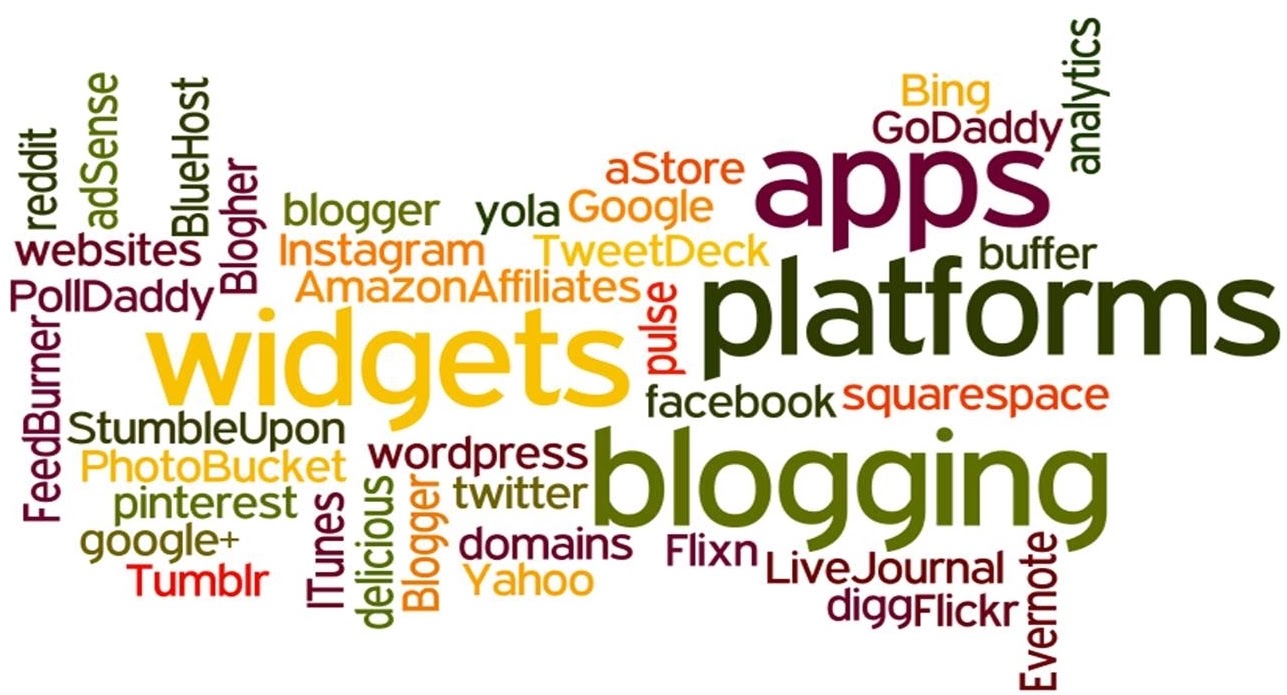When you work on your blog design, you’ll find a few tools are helpful from the start. So, you can’t really start a blog design without a blogging platform and an image editor. Those two are mandatory! Themes, templates, widgets, and plug-ins make your path to a rocking blog design that much easier. I introduce them all in this post.
Regardless of your platform, themes and templates are a great place to start building your blog design. Themes and templates both provide a design framework to display the content of your blog. The terms theme and template are sometimes used interchangeably, but themes are typically more robust, including functionality that improves your ability to customize the theme more easily.
Selecting a blogging platform
If you already have a blog set up, you can go ahead and skip over this section. If you’re starting from scratch, though, you need to choose a blog platform before you can start working on your blog design. Choosing a blog platform isn’t an easy decision because blog platforms come in many different flavors. The main difference to consider is whether you want a blog that’s hosted or self-hosted:
Many bloggers start out with hosted blog software because it is generally (but not always) free, whereas self-hosted blogs may mean you must pay for web hosting, domain names, and other Internet services. In following table, I include costs for the software, but not for hosting and other services, which will vary depending on which providers and services you choose.
Many bloggers start out with hosted blog software because it is generally (but not always) free, whereas self-hosted blogs may mean you must pay for web hosting, domain names, and other Internet services. In following table, I include costs for the software, but not for hosting and other services, which will vary depending on which providers and services you choose.
| Platform | Hosted or Self-Hosted | Free or Paid |
|---|---|---|
| Blogger www.blogger.com |
Hosted | Free |
| Moveable Type www.movabletype.com | Self-Hosted | Software is free for non-business blogs; you pay hosting fees to hosting company |
| Squarespace www.squarespace.com | Hosted | $8–$24/month |
| Typepad www.typepad.com | Hosted | $8.95–$29.95/month (slightly more if billed monthly instead of yearly) |
| Tumblr www.tumblr.com | Hosted | Free |
| WordPress.com http://wordpress.com | Hosted | Free (for more design control, Custom Design upgrade availablefor $30/year) |
| WordPress.org http://wordpress.org | Self-hosted | Software is free; you pay hosting fees to hosting company |
Finding an image editing program
Many bloggers use photo-editing programs, such as the following:
- PicMonkey: Free. www.picmonkey.com
- Photoshop: Subscription fee. www.adobe.com/products/photoshop.html
- Photoshop Elements: $99.99. www.adobe.com/products/photoshop-elements.html
Some programs, like PicMonkey, you can use straight from the web and don’t need to install any additional software. Other programs, like Photoshop, need to be purchased or subscribed to and then downloaded onto your computer.
Using themes and templates
Hosted blog platforms have their own templates to choose from. For some hosted platforms like Tumblr, you can use one of its designs or use one created by someone else.
Exploring the importance of widgets and plug-ins
When it comes to blog design, you can add a lot of features to your blog without really coding anything. Each blogging platform varies in the ability to customize the design and functionality of your blog.
Widgets are little applications that you can install to run within your blog.WordPress comes with many built-in widgets to do things like display your recent posts, a search form, or a drop-down of categories. (Blogger calls widgets “gadgets.”) Widgets are limited mainly to displaying things in your header, sidebar, or footer.
Plug-ins are pieces of software that give additional functionality to a larger software application like WordPress. Widgets are a type of plug-in, but plugins can do things beyond what widgets can do. Plug-ins can give your blog a commenting platform, a way for readers to share blog posts, or an entire
e-commerce store. The plug-ins discussed in this book are for WordPress.org; however, some of them can be used for other blogging platforms.
Plug-ins are pieces of software that give additional functionality to a larger software application like WordPress. Widgets are a type of plug-in, but plugins can do things beyond what widgets can do. Plug-ins can give your blog a commenting platform, a way for readers to share blog posts, or an entire
e-commerce store. The plug-ins discussed in this book are for WordPress.org; however, some of them can be used for other blogging platforms.













Post a Comment